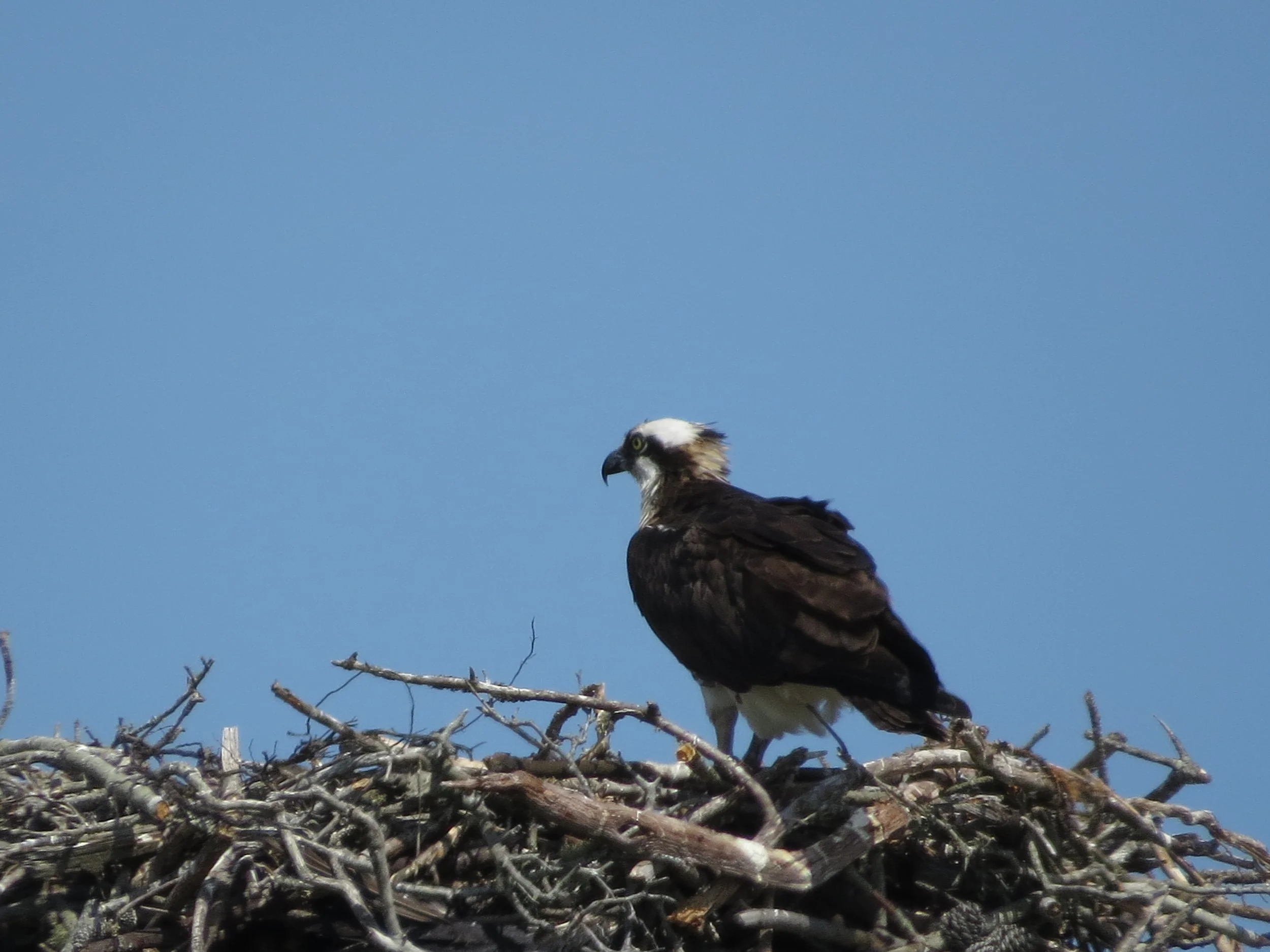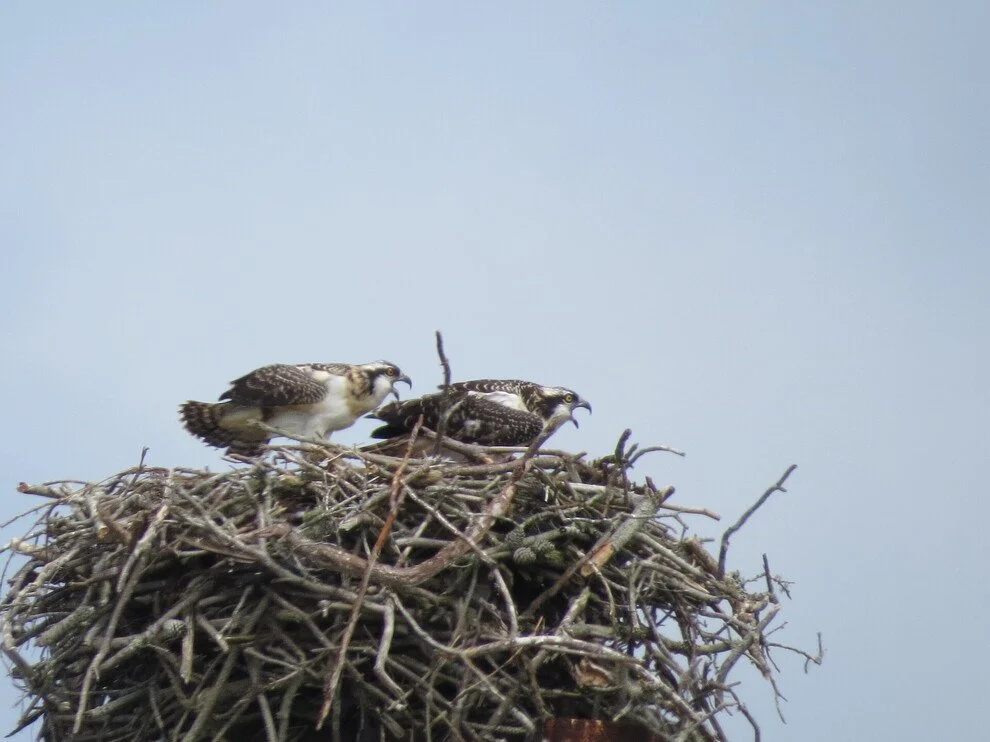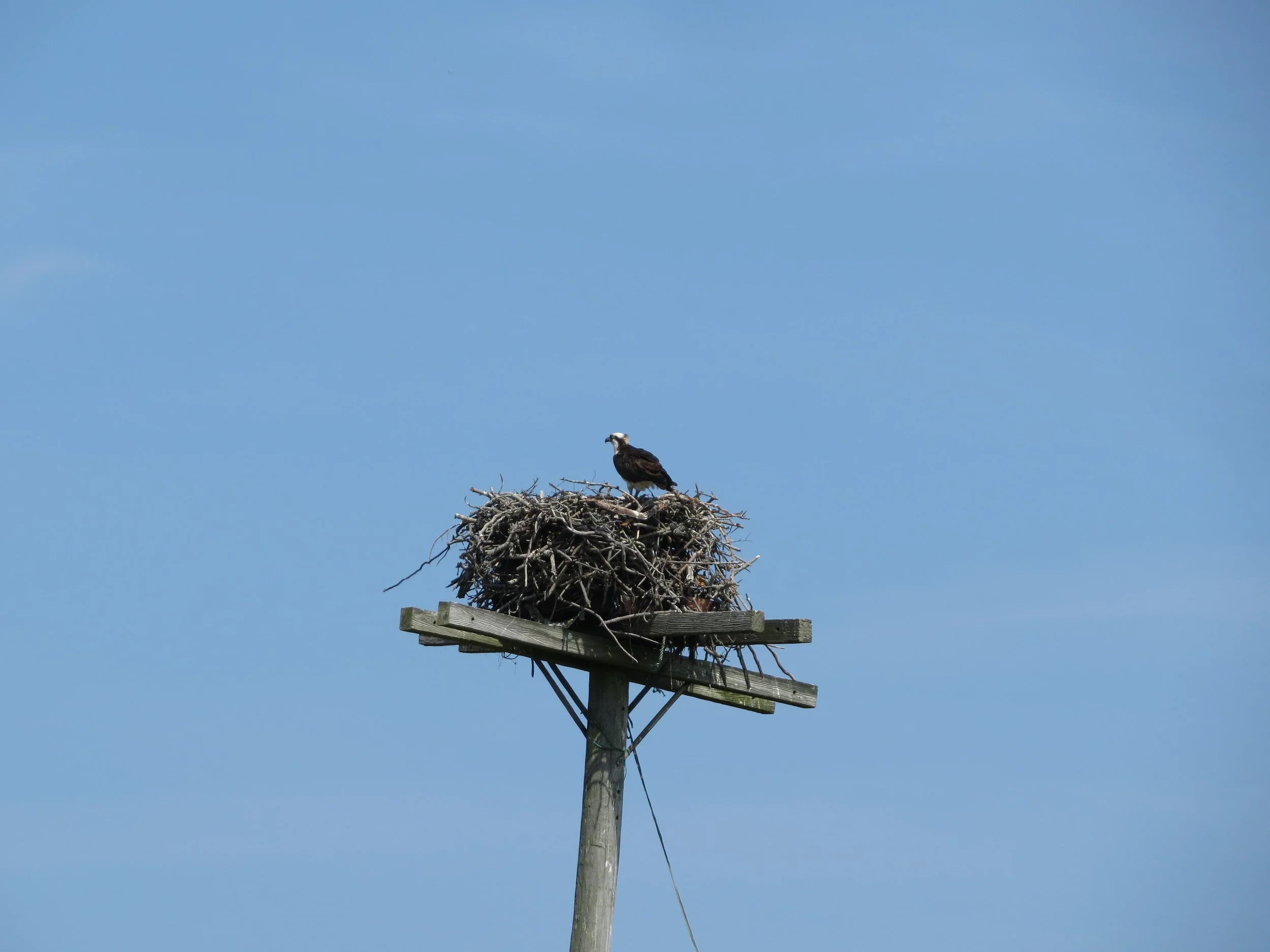
Osprey
A success story
Osprey nearly went extinct in the 1960s due to unintended impacts of the pesticide DDT. As it biomagnified up the food chain, DDT made it harder for birds of prey to absorb calcium, resulting in thin, non-viable egg shells. Osprey populations decreased dramatically until DDT was banned in 1972, leading to a long, slow recovery. On Nantucket various people and organizations put up nesting platform poles to aid in the comeback of Osprey.
A ferocious fish-eater
The diet of Osprey is 99.99% fish. They dive into the water and catch their prey with sharp talons. Adaptations such as specialized eye lids, a rotating shoulder, and barbed toes help them catch and carry fish.
Keeping track of Nantucket’s Ospreys
Launched in 2025, the Nantucket Osprey Watch Program is an exciting new community science effort led by the Linda Loring Nature Foundation to study and support the island’s Osprey population. This project relies on the help of community members to observe, document, and raise awareness for the Osprey that nest across Nantucket.


